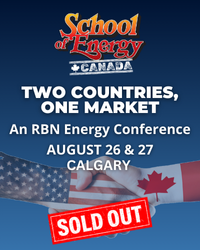The Gulf of Mexico (GOM) has seen more than its share of stormy weather, and — both literally and figuratively — so have crude oil producers active there. Earlier this century, production growth in the offshore GOM was set back by Katrina and other major hurricanes, then by the Deepwater Horizon spill. Starting in 2014, and for five years after that, the Gulf's output ratcheted up, only to be set back again, this time by the double-whammy of COVID and bad storms. Now, the GOM appears to be poised for another period of steady growth — the only question is, with the global push to decarbonize, and with at least of couple of large producers planning to exit the region, will this be Gulf producers' last stretch of good weather? In today's RBN blog, we begin a short series on the ups and downs of GOM production, the new projects starting up this year and beyond, and the Gulf's longer-term prospects.
The offshore Gulf of Mexico is a very different animal than the shale and tight-oil plays that dominate discussions about U.S. crude oil and natural gas production. Unlike E&Ps in the Permian, Bakken and Marcellus/Utica, who, up until the recent supply-chain and labor disruptions, have had the ability to ratchet up their output in response to higher prices by activating more rigs and completing more wells within the span of a few months, producers in the Gulf base their big, upfront investments in new platforms or subsea tiebacks on very long-term oil-price expectations. Also, unlike shale wells, whose production peaks early then trails off, wells in the GOM typically maintain high levels of production for years and years.
That doesn't mean that production in the Gulf can't nosedive — if there's a good reason. In fact, when you look back at GOM crude oil output over the past 22 years (see Figure 1), you see a number of sharp declines, most of them tied to strong hurricanes whose approach spurred the evacuation of manned offshore platforms. The biggest downward spikes in monthly output occurred in the fall of 2005 (with hurricanes Katrina and Rita; dashed red oval) and the fall of 2008 (with hurricanes Gustav and Ike; dashed green oval); there also was the 18-month slide in production after the Deepwater Horizon incident (dashed yellow oval).
Join Backstage Pass to Read Full Article










